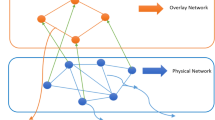Abstract
Distributed systems have experienced a shift of scale in the past few years. This evolution has generated an interest in peer-to-peer systems and resulted in much interesting work. Peer-to-peer systems are characterized by their potential to scale due to their fully decentralized nature. They are self-organizing, adapting automatically to peer arrivals and departures, and are highly resilient to failures. They rely on a symmetric communication model where peers act both as servers and clients. As the peer-to-peer concepts and technologies become more mature, many distributed services and applications relying on this model are envisaged in the context of large-scale distributed and parallel systems. This topic examines peer-to-peer technologies, applications, and systems, and also identifies key research issues and challenges.
Twenty papers were submitted to this topic and six were accepted. These papers were organized in two sessions. The first one has three papers discussing peer-to-peer overlay construction, and the second session is devoted to applications of peer-to-peer overlays.
In “Epidemic-style management of semantic overlays for content-based searching”, the authors presents a proactive epidemic protocol to build semantic overlays and cluster peers having similar content. In “Long range contacts in overlay networks”, the authors propose a protocol to reactively add long range contacts in an overlay network based only on actual routing requests. The approach enables to tolerate non uniform distribution of the peers in the logical space. In the paper “Combining the use of clustering and scale-free nature of user exchanges into a simple and efficient P2P system”, the results of a depth-first search are used to create links between peers so that resulting neighbours in the overlay are peers which have successfully cooperated to find results for previous searches.
“AGNO: an adaptive group communication scheme for unstructured P2P networks” presents a group notification protocol which operates on an unstructured peer-to-peer network. In this approach, the results of previous lookups operations are also used to speed up the notification process. In “Pastis: a highly-scalable multi-user peer to peer file system”, the authors present the design and evaluation of a read-write peer-to-peer file sharing system based on the Pastry/Past approach. The last paper, entitled “Semantic peer to peer overlays for publish/subscribe networks”, presents a content-based publish-subscribe system. A peer-to-peer overlay is built so that peers get connected to neighbours having similar subscribing patterns.
Chapter PDF
Similar content being viewed by others
Author information
Authors and Affiliations
Editor information
Editors and Affiliations
Rights and permissions
Copyright information
© 2005 Springer-Verlag Berlin Heidelberg
About this paper
Cite this paper
Kermarrec, AM., Jelasity, M., Rowstron, A., Domingos, H. (2005). Topic 15 Peer-to-Peer and Web Computing. In: Cunha, J.C., Medeiros, P.D. (eds) Euro-Par 2005 Parallel Processing. Euro-Par 2005. Lecture Notes in Computer Science, vol 3648. Springer, Berlin, Heidelberg. https://doi.org/10.1007/11549468_124
Download citation
DOI: https://doi.org/10.1007/11549468_124
Publisher Name: Springer, Berlin, Heidelberg
Print ISBN: 978-3-540-28700-1
Online ISBN: 978-3-540-31925-2
eBook Packages: Computer ScienceComputer Science (R0)




